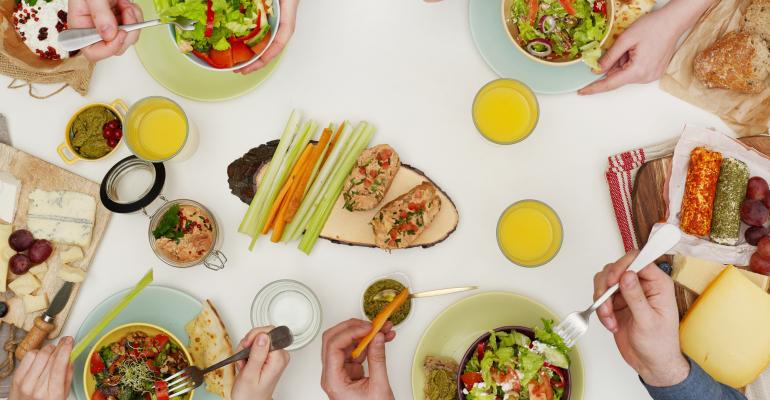Your attendees know the routine of the usual dinner event. They connect with the people they know at their table while they wait for things to get started. Then they head to the buffet line to fill their plate before settling in for the dinner presentation. Once that’s finished, they enjoy a little lighthearted conversation before the evening comes to a close.
While this traditional dinner environment can be enjoyable, why not shake things up, get people interacting with one another, and make it more than just a dinner—make it a dinner experience?
I have found that people love participating in experiential dinners where they get food, connection, some education, and a few laughs. Here are three simple ways you can make your dinner meetings more engaging, from a wellness perspective.
1. Focus on the food. Food nourishes the body for energy, protects your vital organs, and fights disease in the body—but no one thinks about that when they’re at an educational luncheon or dinner. Incorporate fun, lighthearted education with each course that helps people understand how the quality of the food they’re eating affects their health. And to be sure the food is both tasty and nourishing—and within your budget—work directly with the executive chef.
2. Involve the audience. Instead of having someone lecture during the meal, create an interactive activity for each course—you’ll find that the energy of the whole room lights up once you get the audience involved! Have one activity that focuses on having people working together in pairs, another that engages the whole table, and a third that includes preselected audience members heading to the stage.
This interaction energizes the event, ignites connection between complete strangers, and provides fun memories of their evening together. Because attendees apply what they’re learning through the activities, they’ll be more apt to implement it after the event.
3. Provide space. Don’t fill every minute of the meal with an agenda. It is important to provide space for attendees to connect with their friends, have a few laughs of their own, and enjoy the food. Our brains need time to process input, and a mindful eating experience allows them to enjoy the nourishment at a slow pace, appreciate the fulfillment they receive from connection with others, and relax after a day of conference sessions.
How do you shake up tradition and add a creative boost to your lunch or dinner?






